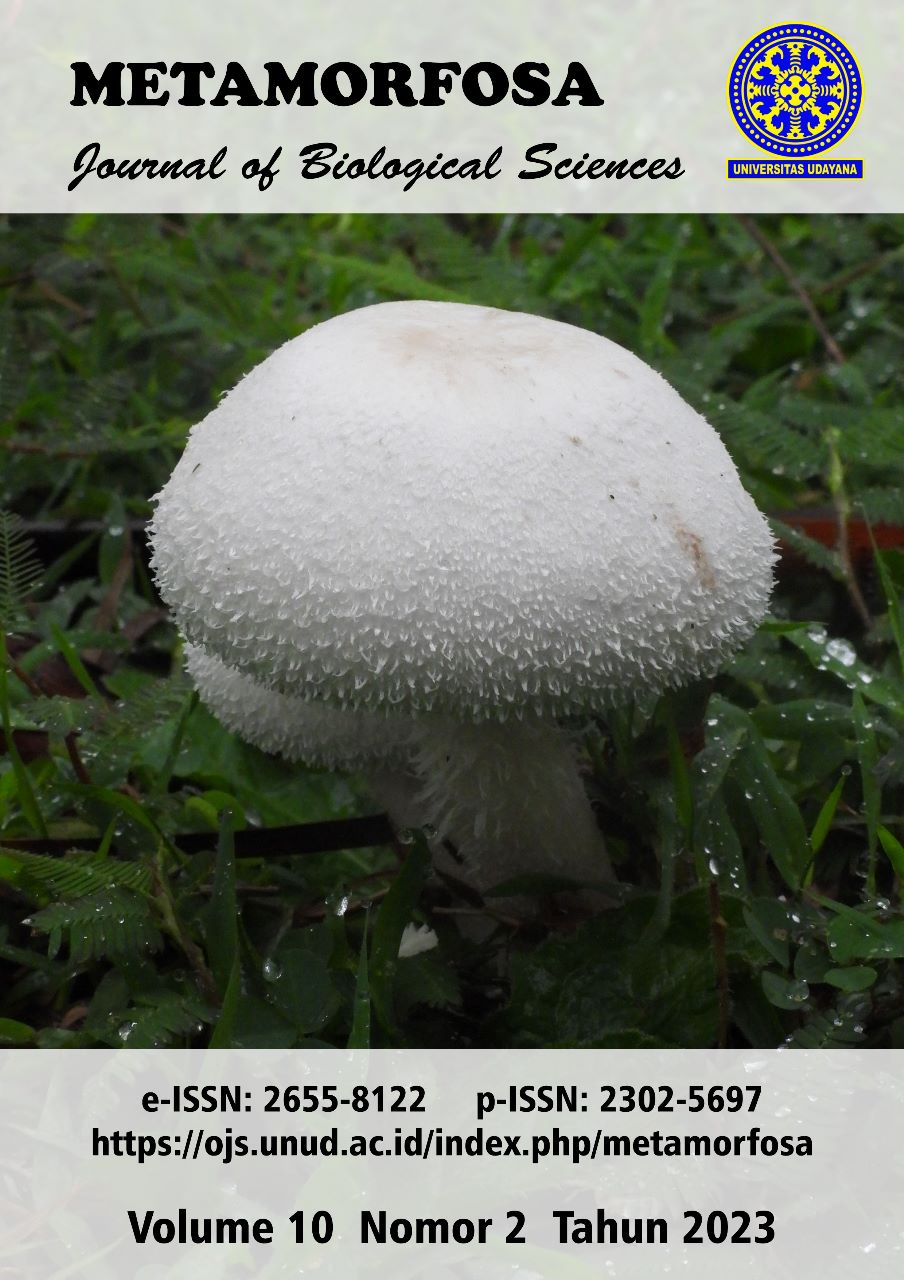Virtual Prediction of Zerumbone Compound in Lempuyang as Anti-Bacterial Agent Through In-Silico Approach
Abstract
A native herbaceous plant of Southeast Asia, lempuyang is also widely distributed in Indonesia. This plant's primary bioactive component, Zerombone, has a variety of bioactivities, including an anti-bacterial effect. Typically, transglycosylase and alanine racemase were necessary proteins for forming peptidoglycan membranes and are now frequently used as anti-bacterial targets. Thus, using an in-silico approach, this work assessed the interactions between the zerumbone and the protein targets. The PubChem database was searched for the zerumbone compound (CID 5470187). Transglycosylase (PDB code: 1SLY), alanine racemase (PDB code: 4WR3), and the control protein target were also obtained from the PDB database. The Molegro Virtual Docker 5.0 version and the Discovery Studio application 21.1.1 versions were used to interface with and visualize the protein target and zerumbone compound. The result demonstrated that, like the control, the zerumbone compound in lempuyang blocks the active sites of the transglycosylase and the alanine racemase. The zerumbone-alanine racemase complexes additionally showed lower energy binding than other complexes. In conclusion, zerumbone in lempuyang can be a new candidate for anti-bacterial agents by inhibiting the synthesis of membrane peptidoglycan via suppressing transglycosylase and alanine racemase activities.





